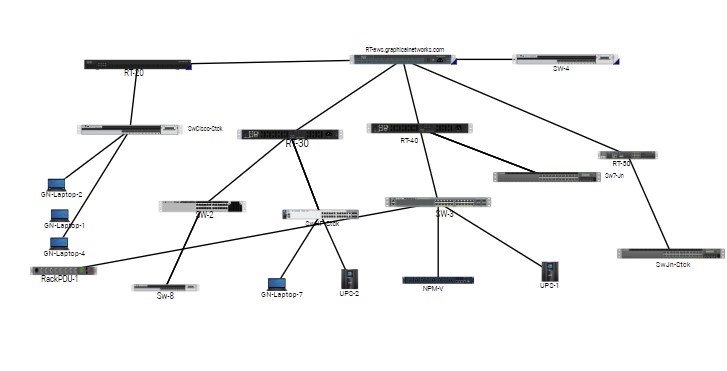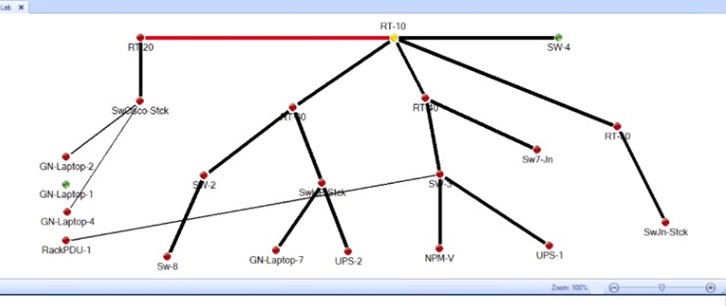
Do you use Solarwinds?Are you fed up with struggling to keep track of all your network devices, their locations, and associated metadata? Having trouble managing your network documentation and visualizing the relationships between IT? netTerrain is network documentation software (and visualization) that you can use to document and visualize your network. With netTerrain, understanding and seeing your network is easy: you can either manually create your own diagrams or take advantage of netTerrain’s included network discovery feature that uses SNMP to automatically map out your network.
Easy-Peasy Visualization of Solarwinds Data & Other Data
Got data in third-party apps and homegrown databases? netTerrain comes with pre-built connectors to numerous apps and services, such as ServiceNow, AWS, Solarwinds, WhatsUp Gold, PRTG, and many others.
netTerrain’s Collector gives you a simple but powerful way to import data from various sources using REST API connectors that you can use to connect to your apps and services in clicks, including Solarwinds. If you’re using SolarWinds Network Atlas (for example), netTerrain’s Collector can import data from it and convert the network devices into netTerrain devices with ports, creating more detailed topology maps than those provided by SolarWinds alone.
Get Detailed Information in Clicks
I’m often asked, “well I have SolarWinds and Network Atlas now, so why would we need a tool like netTerrain? ”
Yes, tools like SolarWinds do an excellent job of collecting network data and providing alerts! — but they’re just not that good at visualizing the relationship of IT to the business and people.
Network documentation software like netTerrain changes that. For example, when an alarm is activated from Orion and you have netTerrain in place, you can:
- Quickly locate the affected network device in netTerrain by running a search.
- Pinpoint the device’s exact physical location (data center room, rack, and position within the rack).
Additionally, you can view important metadata related to the network device, such as:
- The impact on other business groups.
- The necessary contacts for notification.
- Warranty or maintenance contract status.
- The last changes made to the network asset.
With netTerrain, you can not only view a network topology map, but can also view the device in the actual data center or telecom room and add as many data attributes as you like. Interesting, right? You can use netTerrain for viewing network maps, but also the physical views and associate the devices with other key aspects, like cost, warranty, and maintenance dates, applications, and more.
In addition, items like config files, escalation procedures, and any related documents can be attached to the network device, This is helpful for help desk folks: when a shift is over, the next person taking care of say a ticket, can easily follow the directions and resolve the problem, using netTerrain and SolarWinds together.
Optimize Resources & Cut Costs
On top of being able to add in key data for any given network device, you can also use netTerrain as an ITAM solution (check out this article I wrote). netTerrain’s ITAM features help your organization to grasp just how many network devices you have and reduce any unnecessary spending on computing resources. Management can easily report on how many network devices the organization currently has, track current on hand spare parts, and track any available devices. Furthermore, you can easily identify and reallocate underutilized resources through netTerrain EM Module, a no cost option that’s included in netTerrain DCIM (data center infrastructure management).
So, are netTerrain and SolarWinds a good fit together? I clearly think so but decide for yourself: test drive netTerrain for 14 days and find out if this is the perfect combination for your network team.
